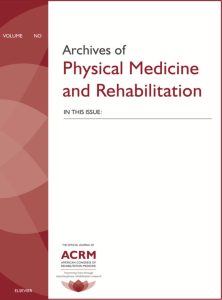Publications

Measuring mechanical properties of spastic muscles after stroke. Does muscle position during assessment really matter?
Authors: Maria-Isabel Garcia-Bernal, Paula Gonzalez-Garcia, Maria Jesus Casuso-Holgado, Maria Dolores Cortes-Vega, Alberto Marcos Heredia-Rizo
Affiliations: Departmento de Fisioterapia, Facultad de Enfermeria, Fisioterapia y Podologia, Universidad de Sevilla, Sevilla, Spain
Journal: Archives of Physical Medicine and Rehabilitation - December 2022, Volume 103, Issue 12, Pages 2368-2374 (DOI: 10.1016/j.apmr.2022.05.012)
-
Field & Applications:
- Medical
- Clinical trial
- Neurology
- Methodology
- Validity
- Myotonometry is a valid and easy-to-use approach to objectively quantify muscle mechanical properties in people after stroke.
Objective: To investigate the influence of muscle position (relaxed vs. stretched) on muscle mechanical properties and the ability of myotonometry to detect differences between sides, groups, and sites of testing in stroke patients. We also analyzed the association between myotonometry and clinical measures of spasticity.
Design: Cross-sectional study.
Setting: Outpatient rehabilitation units including private and public centers.
Participants: Seventy-one participants (20 subacute stroke, 20 chronic stroke, and 31 controls) were recruited.
Intervention: Muscle mechanical properties were measured bilaterally with a MyotonPRO at muscle belly and musculotendinous sites during two protocols (muscle relaxed or in maximal bearable stretched position).
Main outcome measure: Muscle tone and stiffness of the biceps brachii and gastrocnemius. Post-stroke spasticity was evaluated with the Modified Tardieu Scale (MTS). A mixed-model analysis of variance (ANOVA) was used to detect differences in the outcome measures.
Results: The ANOVA showed a significant effect of muscle position on muscle mechanical properties (higher tone and stiffness with the muscle assessed in stretched position). Measurements with the stretched muscle could help discriminate between spastic and non-spastic sides, but only at the biceps brachii. Overall, there was significant increase in tone and stiffness, in the chronic stroke group, and in myotendinous sites, compared to muscle belly sites (all, P < .05). No correlations were found between myotonometry and the MTS.
Conclusion: Myotonometry assessment of mechanical properties with the muscle stretched, improves the ability of myotonometry to discriminate between sides in patients after stroke, and between people with and without stroke.
Keywords: stroke, muscle spasticity, outcomes assessment
Myotonometry measurements of tone and stiffness can discriminate better between the affected and non-affected sides in people with stroke and between these and healthy controls, when myotonometry is performed with the muscle stretched. Clinical measures of spasticity were not correlated with myotonometry, regardless of the muscle position during evaluation.


